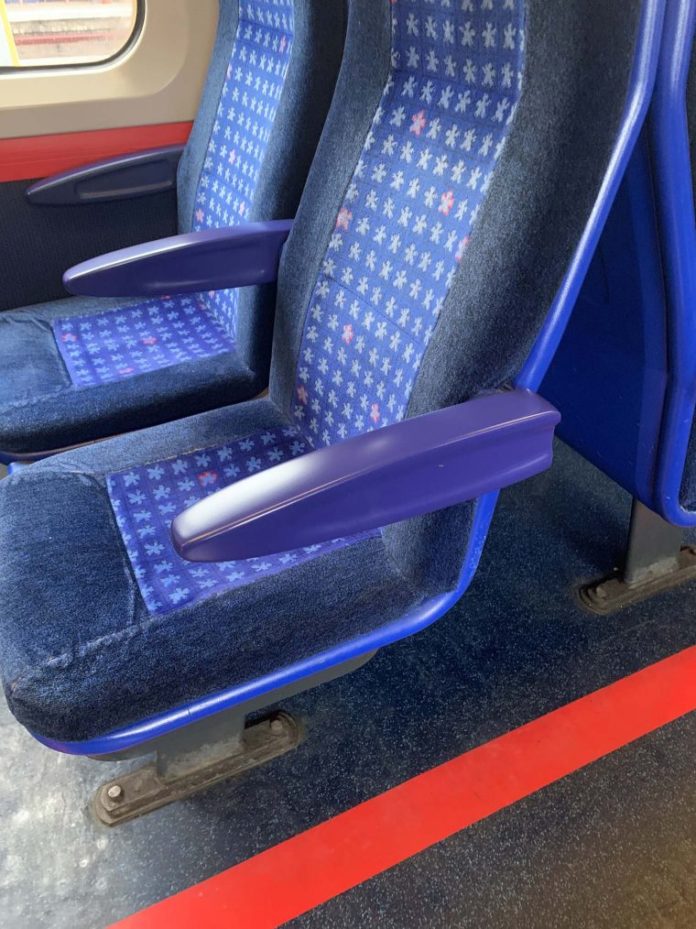Last year, Stratasys, DB ESG & Angel Trails announced their collaboration to 3D print interior & exterior components of trains. For this first experience of Stratasys in the rail industry, the collaborators had planned to produce an arm rest, a grab handle and a seat back table that would be tried in trains throughout this year.
The three partners recently announced the installation of four passenger armrests and seven grab handles on Chiltern Railways trains. The first trial was a success as it demonstrates how AM is an appropriate manufacturing tool to accelerate the replacement of obsolete parts.
In the rail industry, the number of trains produced per year is very small compared to the production of vehicles in the automotive industry. Train operators therefore face more challenges when it comes to vehicle maintenance and part replacement.
Leveraging additive manufacturing enables to address these issues, by getting vehicles back into service quicker, therefore by improving the quality of service for passengers.
“In recent times, we’ve seen growing concern amongst operators that sourcing replacement parts for older train fleets at a reasonable cost and in a short timeframe is proving increasingly difficult,” explains James Brown, Data and Performance Engineer, Angel Trains.
“The problem is that traditional manufacturing methods only make it cost-effective to produce high volumes of spare parts, even though an operator may only need a few obsolete train parts replaced. In addition, lead times can take months. This is why we have teamed up with DB ESG and Stratasys, showing how operators can overcome these hurdles by using 3D printing to produce the exact amount of parts they need at a fraction of the time and cost of traditional methods,” he adds.
At the manufacturing level
Using conventional manufacturing technologies, it would have taken 4 months to produce these obsolete parts. However, using Stratasys FDM 3D printing, the team fabricated the armrest within one week, which is a decrease of almost 94%.
As for the grab handle device, prior to using AM, they would have paid up to £15,000 and the production would have taken around two and a half months. With 3D printing, it took three weeks to produce the seven grab handles required and at a significantly lower cost per part.
DB ESG conducted comprehensive testing on a range of industrial-grade 3D printing materials to ensure the first-ever compliance to UK rail industry standard EN45545-2 by 3D printed parts. The final parts were 3D printed using Stratasys’ FDM-based Fortus 450mc Production 3D Printer in ULTEM™ 9085 resin, which was certified to the rail industry’s fire, smoke and toxicity standards.
You can now post free of charge job opportunities in the AM Industry on 3D ADEPT Media. For further information about 3D Printing, follow us on our social networks and subscribe to our newsletter : Facebook, Twitter, LinkedIn & Instagram !Would you like to be featured in the next issue of our digital magazine? Send us an email at contact@3dadept.com






